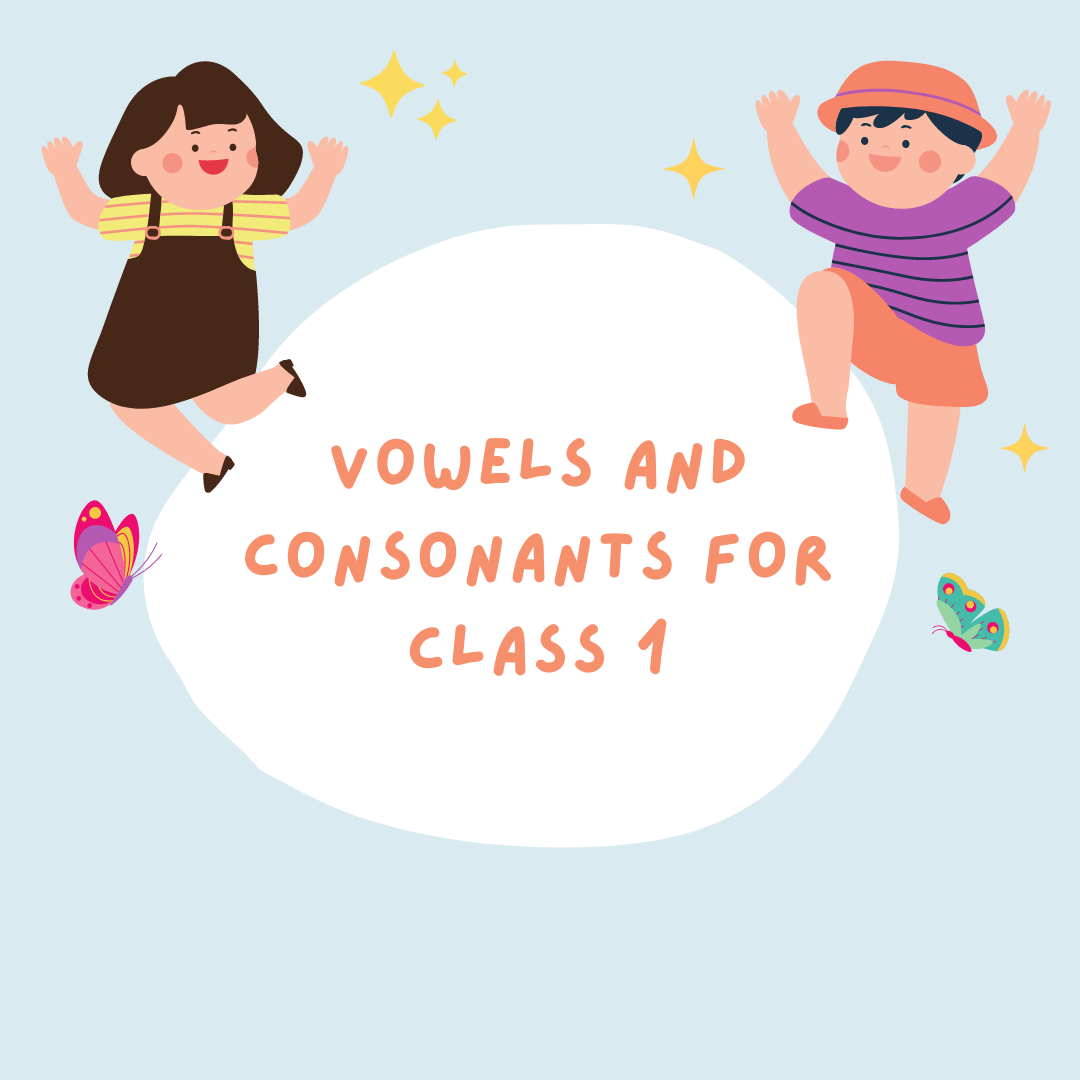Vowels and consonants for class 1 are essential for ensuring crisp English speaking skills, especially for children. Moreover, they are extremely beneficial for students reading passages, as they can correctly enunciate a word.
What are Vowels for Class 1
A, E, I, O, and U are generally called vowels; however, Y is sometimes included. Such alphabets often require pronunciation with an open mouth. For example, cow. If you notice, O is particularly stretched in the word and is often noticed separately.
Most syllables primarily consist of vowels. Vowels are voiced and increase sonority. All vowels produce more than one sound. They can also have no sound at all. The airflow from the lungs isn’t constricted while speaking out vowels.
There are two forms of vowels, namely, monophthongs and diphthongs. The former makes a single speech sound, e.g., feet, teeth, crook, etc. On the other hand, two vowels are adjoined and paired so that the first vowel sound blends with the second one, called a diphthongs vowel.
What is Consonant for Class 1
Alphabets that are not vowels are called consonants. Therefore, the remaining 21 alphabets of the English language, which are b, c, d, f, g, h, j, k, l, m, n, p, q, r, s, t, v, w, x, y, and z are consonants.
The pronunciation of such alphabets requires tongue, teeth, or lip movement. Consonants help to enhance sonority and speech variance. Unlike vowels, these alphabets don’t require stressing all the time. The flow of air from the lungs is constricted.
Check out Basic English Sentences for Kids.
Vowels and Consonants Example for Class 1
English requires using vowels and consonants together to properly pronounce a word.
Vowels example for class 1
1. Ball
2. Cow
3. Girl
4. Pencil
5. Elephant
6. Kite
6. Airplane
8. Umbrella
Consonants example for class 1
- School
- Diwali
- Flag
- Friday
- River
- House
- Book
- Animal
- May
- Table
- Lion
- Tabla
- House
- City
- Grammar
- Zebra
*b, c, d, f, g, h, j, k, l, m, n, p, q, r, s, t, v, w, x, y, and z are consonants.
Vowels and Consonants Worksheet for Class 1
Fill in the blank with the correct vowel:
- E_gl_
- P_n
- F_ll
- N_t
- H_t
- B_r_d
- W_m_n
- B_t
- Cl_ck
- Fl_p
Answers
- Eagle
- Pen
- Fill
- Not
- Hot
- Bored
- Woman
- But
- Click
- Flip
Identify the correct consonants:
- Flag
- Chair
- Friday
- Camel
- Foul
- Camel
- Arrow
- Cheerful
- Mango
- Beware
- Sweet
- Undo
- Table
- Book
- Caller
- Dusk
- Dawn
- Happy
- Beautiful
- Miracle
*b, c, d, f, g, h, j, k, l, m, n, p, q, r, s, t, v, w, x, y, and z are consonants.
Conclusion
Vowels and consonants work together to pronounce a word. A crisp pronunciation is a vital part of the English language. It enhances spoken English skills and makes words more understandable to the listener. Out of 26 alphabets of the English language, five are vowels, and the remaining twenty-one are consonants. Consonants are pronounced using tongue, teeth, or lip movement. On the other hand, vowels are pronounced with an open mouth. The best way to learn the pronunciation of vowels and consonants is by regularly speaking new words.
